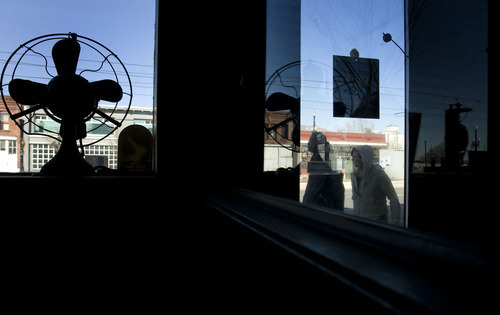This is an archived article that was published on sltrib.com in 2012, and information in the article may be outdated. It is provided only for personal research purposes and may not be reprinted.
Look at a map of where Salt Lake City police arrested someone for selling drugs in 2011, and you will realize there is hardly a block in the city untouched by the narcotics trade.
What is interesting is what drug is sold on which block.
If you are looking for crack cocaine, start on North Temple about 500 West and walk to about 200 South. Computer mapping of Salt Lake City police data shows a thick cluster of cocaine arrests along that route.
If you're seeking methamphetamine, keep walking.
Meth isn't sold where crack is sold, the data show. The meth cluster is about three miles away, centered on 1300 S. West Temple.
Salt Lake City police Lt. Mike Ross, who leads the department's vice unit, said something about the culture of the two drugs keeps them segregated. That culture extends to how they are sold.
Crack dealers trade their drug on the street, if subtly, to anyone who walks up with money. Meth dealers in Salt Lake City, Ross said, are less brazen. They deliver their product.
Ross said many arrests of meth dealers occur by following a suspected dealer and pulling him or her over in his or her car before or after a delivery.
"You won't get a street dealer moving methamphetamine," Ross said. "It's strange."
Ross said the reason there are so many meth arrests near 1300 S. West Temple is a number of meth users live there so that's where they will catch the delivery men.
Debrorah Kreeck Mendez, supervisor of drug team at Salt Lake Legal Defenders, suspects a different reason for the segregation. She believes police simply ask for one kind of drug in one neighborhood and a different kind in another. Her reasoning is her addicted clients never seem to care which drug they are using.
Kreeck Mendez called stings of individual dealers "a very ineffective way of handling things and handling law enforcement. They never move much beyond the bottom layer."
Ross insists his officers can't find a mix of drugs in the two neighborhoods. Ross said the reason there are so many arrests for cocaine and meth distribution and almost none for marijuana distribution is there is rarely a complaint about marijuana dealers, Ross said.
"We have to respond to complaints," Ross said. "And when you go downtown, a lot of it is not marijuana dealers. It's crack dealers."
If you're looking for a marijuana arrest cluster, the closest thing is along State Street below 400 South. Most of those finds, which usually end in citations, are the result of routine traffic stops where the driver turns out to have marijuana, Ross said.





